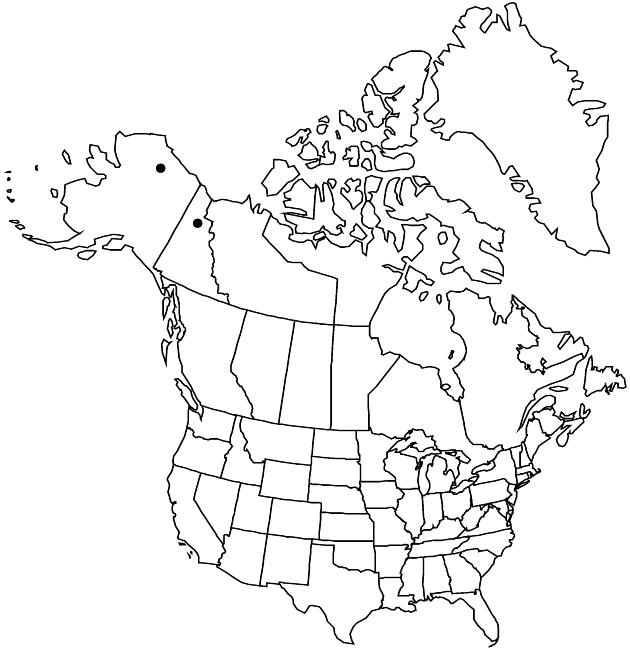Erigeron muirii
Proc. Amer. Acad. Arts 17: 210. 1882.
Perennials, 3–10(–12) cm; rhizomatous, fibrous-rooted, rhizomes or caudices simple, relatively short and thick. Stems erect, densely cobwebby-lanate (hairs white), eglandular. Leaves basal (persistent) and cauline; blades oblanceolate to subspatulate, (10–)20–60 × 2–10 mm, margins entire, faces lanate, eglandular; cauline blades oblong to linear-oblong, gradually reduced, bractlike. Heads 1. Involucres 8–10 × 12–20 mm. Phyllaries in 2(–3) series (purple beneath pubescence), densely and closely lanate, sparsely glandular (glandularity obscured). Ray florets 60–100; corollas white, often drying pinkish, 8–13 mm (mostly 1–2 mm wide), laminae coiling. Disc corollas 3.5–5 mm. Cypselae 1.9–2.2 mm, 2-nerved, faces strigose-hirsute; pappi: outer of setae, inner of 13–20 bristles. 2n = 18.
Phenology: Flowering Jul–Aug.
Habitat: Rocky slopes and ridges, tundra, gravel barrens, sandstone outcrops
Elevation: 300–1000 m
Discussion
Of conservation concern.
Erigeron muirii is known from Herschel Island in northern Yukon. Its densely lanate vestiture gives the whole plant a gray-green aspect.
Selected References
None.
